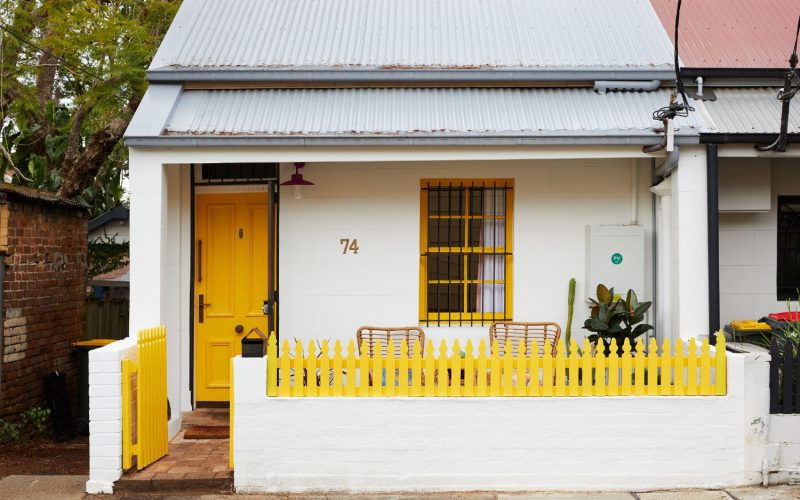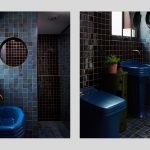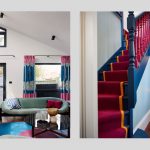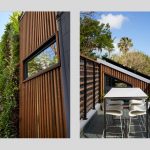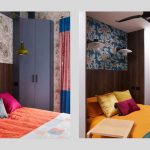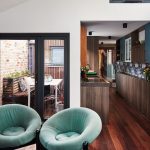This vibrant semi-detached worker’s cottage challenges the collective thinking about sustainable building
Words Carrol Baker
Photography Sally Griffiths
This inner-city home has rewritten the rulebooks on eco-friendly living. The project’s intent was to be an off-grid home in an urban setting. This means being fully self-sufficient with water and energy systems.
The existing dwelling was a petite 104sqm. Homeowner Dr Laura Ryan has achieved the seemingly impossible, turning the compact single-fronted worker’s cottage into a unique light-filled home that’s just a hair’s whisker from being completely off-grid. It’s a labour of love that began nine years ago, with the forward-thinking concept catching the attention of the Grand Designs Australia team.

According to Laura, traditional thinking says it’s easy to build an off-the-grid sustainable house if you have a large block of land and lots of money to spend. “I figured that if I can find a way to make being sustainable easier, without building a house that included a drop toilet out the back (complete with brown snakes and a stick to fend them off), then maybe a lot more of us would do it!”
Before the renovation, the home was a classic inner-city dwelling with character, but there was a lack of natural light.
“It had rising damp in the front rooms and a courtyard where the only thing that would grow was mould!” Laura reveals.
Her brief was to make the home completely off-grid by following Passive Haus principles. She wanted to capture enough water to support a three-person household, recycle materials, and use non-toxic and sustainably sourced materials. It also needed to be affordable so it could serve as a sustainable blueprint of sorts for others contemplating a sustainable build in a smaller dwelling. “I wanted a sense of enclosure and intimacy, while also having visual relief —this was key to the home feeling spacious, despite the small footprint.”
The philosophy also centred on the home having an engaging design and feel. “We want to contribute to an attitude shift in society, so it’s important that the house is not only sustainable, with low running costs,” notes Laura,” but also that it’s liveable and appealing by today’s standards and never viewed as ‘slumming it’ or ‘extreme’.”

Enter a swag of design professionals and the project began. The crumbling rear lean-to living, dining and kitchen was demolished. There was a new study and loft constructed, with dormer window, opening to a leafy outdoor terrace. A new bathroom, kitchen and hall lead you to the vibrant new living and dining area that spills out to a central courtyard and rear service yard.
There was a host of significant challenges that had to be negotiated. The off-grid elements needed space for storage and there’s a heritage overlay. Building against neighbouring boundaries and overshadowing from neighbouring dwellings were just a few.
The vibrant colours in the project add a dash of pizzazz. “My thinking was that if the space was visually interesting,” says Laura, “maybe more people would pay attention to my strange little project and be inspired to see what’s possible in urban areas.”



The colours breathe life and energy into the interiors. Everywhere you look there are treasured finds and unique discoveries sourced from vintage suppliers. The project involved consulting with several water engineers, acoustic engineer, structural engineer, arborist, prefab manufacturer, a solar expert, and two separate plumbing teams. Each had to work closely with the other and like pieces of a complex puzzle, the home began to take shape.
The water harvesting and recycling system includes 10,000-litre water tanks under the floor, a grey water recycling system and tank. The incinerating toilet is waterless and not connected to the sewer. Instead, it’s powered by electricity.
In researching the project, Laura searched the globe for people to help design the water solution, even enrolling in off-grid courses run by people who’d lived in “earth ships” in California. She emailed anyone who remotely had anything to do with water. “This went on for years; any solution was always too difficult,” she says. “In the end the guy who ended up helping me design the solution, John Caley, lives up the road in Newtown!”
Project Team
Architect Modus Architects
Builder King Building Group
This article was originally published in Grand Designs Australia issue 13.6.
